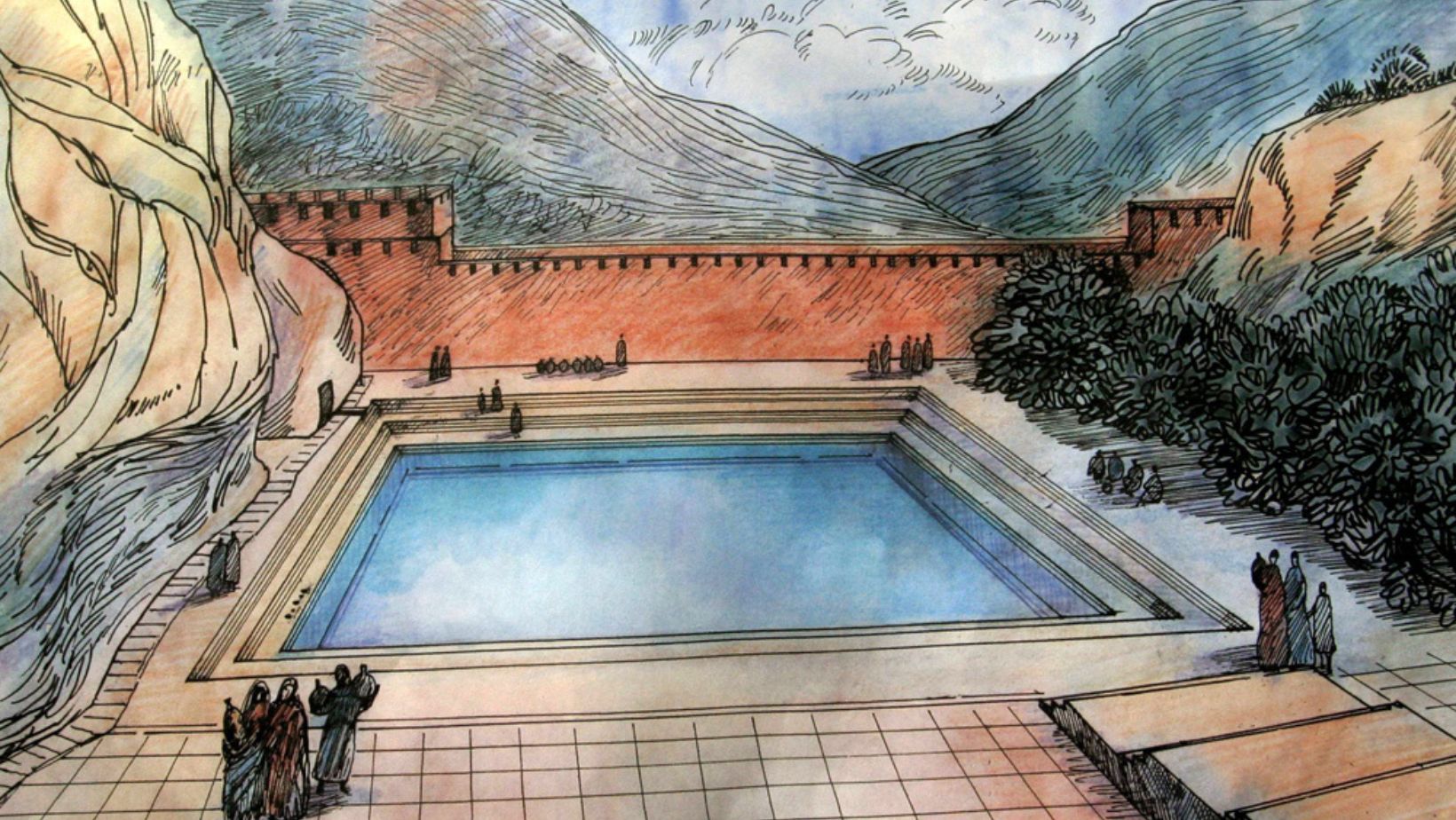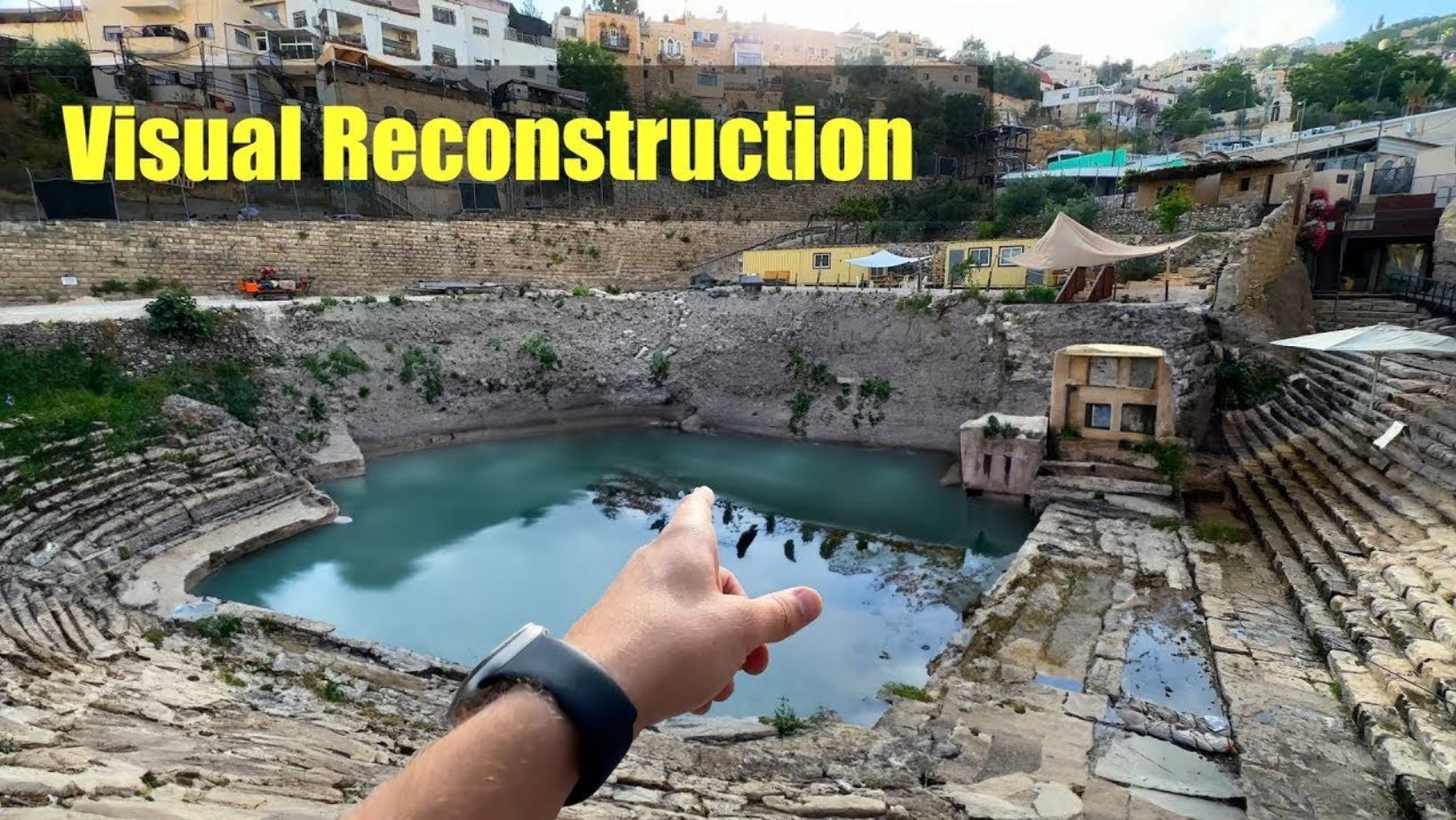The Pool of Siloam is a fascinating historical site nestled in the heart of Jerusalem. Known for its rich biblical connections, this ancient water source has drawn interest for centuries. Mentioned in the Gospels, it is renowned as the place where Jesus healed a blind man, making it a significant spot for both scholars and pilgrims. Recent excavations have unveiled more than just stones and water; they’ve uncovered stories of the past that shape our understanding of ancient Jerusalem. Join us as we delve into the intriguing history and recent discoveries surrounding the Pool of Siloam!
Historical Background of the Pool of Siloam

The Pool of Siloam dates back to ancient Jerusalem, with origins tracing back to the First Temple period. It was constructed to collect water from the Gihon Spring, the main water source for the city. This pool played a vital role in the daily life of Jerusalem’s inhabitants, providing water for drinking and ritual purposes.
In biblical texts, the Pool of Siloam is significant for its association with healing and purification. The Gospel of John describes how Jesus healed a blind man by instructing him to wash in the pool. This event highlights the pool’s importance in early Christian narratives. Additionally, it was used during Jewish festivals, emphasizing its religious and cultural significance in ancient society. The Pool of Siloam, therefore, stands as a testament to the rich history and spirituality of Jerusalem, connecting the past with the present.
The Importance of Water in Ancient Jerusalem
Water was crucial for the survival and prosperity of ancient Jerusalem. The city, situated on a hill, had limited natural water sources. This scarcity made it essential to develop a sophisticated water management system. The Gihon Spring, located outside the city walls, was the primary water source, supplying water through a series of tunnels and reservoirs.
The Pool of Siloam played a vital role in this infrastructure. It served as a crucial reservoir, collecting water from the Gihon Spring for the city’s residents. This pool not only provided drinking water but also facilitated rituals and purification practices. Its strategic location made it accessible to those living in the city, ensuring that water was available for both daily use and religious ceremonies.
In ancient Jerusalem, the management of water resources reflected the city’s priorities. The Pool of Siloam symbolizes the ingenuity of the people in overcoming environmental challenges. It highlights the importance of water in sustaining life, culture, and spirituality in a city that thrived on its historical and religious significance.
Recent Excavations: Overview

Recent archaeological excavations at the Pool of Siloam have unveiled significant findings that shed light on ancient Jerusalem. In 2004, a team from the Israel Antiquities Authority discovered the pool during construction work for a sewer line. Since then, various excavation projects have been undertaken to explore its depths and understand its historical context better.
Key teams involved in these efforts include the Israel Antiquities Authority and international researchers from institutions like the University of North Carolina. These collaborations have allowed for a multidisciplinary approach, combining archaeology, history, and geology. Notable discoveries include the pool’s original structure and artifacts that indicate its use in ritual bathing.
The excavations have also revealed ancient drainage systems and pathways, providing insights into the daily lives of Jerusalem’s inhabitants. The ongoing work at the Pool of Siloam emphasizes its importance as a historical site and contributes to the understanding of water management in ancient Jerusalem. As more findings emerge, they continue to enhance our appreciation of the pool’s role in the city’s infrastructure and culture.
Findings from the Excavations
The recent excavations at the Pool of Siloam have yielded significant artifacts that reveal much about its history and use. Archaeologists uncovered pottery fragments, coins, and tools dating back to the Second Temple period. These artifacts provide valuable insights into the daily lives of the people who frequented the pool and the cultural practices of ancient Jerusalem.
One notable finding is the original stonework of the pool, which showcases impressive engineering techniques. The pool’s construction involved carefully placed large stones, indicating the skill of ancient builders. Additionally, researchers discovered remnants of a complex drainage system that directed water from the nearby Gihon Spring, emphasizing the importance of water management in the area.
The artifacts and structural elements help historians understand the pool’s role as a site for ritual purification and community gathering. This evidence supports the idea that the Pool of Siloam was not just a water source but a significant social and religious hub in ancient Jerusalem. Overall, these findings deepen our appreciation of the pool’s historical context and its influence on the lives of those in the city.
The Pool of Siloam in Biblical Accounts
The Pool of Siloam holds significant meaning in biblical texts, particularly in the context of healing and purification. In the Old Testament, it is mentioned in the context of Jerusalem’s water supply and is linked to King Hezekiah’s water system. However, it is in the New Testament where the pool’s significance shines through, particularly in the story of Jesus healing a blind man.
In John 9, Jesus encounters a man blind from birth. He instructs the man to wash in the Pool of Siloam, saying, “Go, wash in the Pool of Siloam” (John 9:7). The man obeys and miraculously gains his sight, demonstrating the pool’s role as a site of healing and faith. This account not only emphasizes the pool’s importance in the life of the community but also illustrates the spiritual significance attributed to water in ancient traditions.
The narrative highlights themes of faith, obedience, and restoration, making the Pool of Siloam a powerful symbol in Christian teachings. These biblical references connect the physical location to profound spiritual lessons, ensuring its enduring relevance in religious history.
Cultural and Religious Significance
The Pool of Siloam played a vital role in ancient Jewish rituals and practices. It was primarily used for purification purposes, particularly during the Festival of Sukkot, when people would draw water from the pool for ceremonial rites. This practice symbolized spiritual renewal and the importance of water in Jewish tradition. The pool also served as a gathering place for worshippers, reinforcing community bonds through shared rituals.
In modern religious contexts, the Pool of Siloam continues to hold significance. It is recognized as a historical site that connects contemporary Jews to their heritage. Pilgrimages to the pool are made by those wishing to deepen their understanding of biblical history and Jewish customs. Additionally, Christians often visit the site to reflect on its connection to the healing miracles of Jesus, particularly the account in John 9.
The pool’s enduring legacy highlights the intersection of faith, history, and community. Today, it stands as a testament to the rich cultural traditions that have shaped religious practices for centuries.
Comparative Analysis with Other Historical Pools
The Pool of Siloam shares similarities with other ancient water sources in Jerusalem, such as the Pool of Bethesda and the Virgin’s Fountain. All three served critical roles in the daily lives of residents, providing essential water for various needs. The Pool of Siloam was primarily used for ritual purification and as a gathering spot during festivals, while the Pool of Bethesda is often associated with healing, mentioned in the New Testament. In contrast, the Virgin’s Fountain was more of a public water source for daily use.
While these pools served distinct purposes, they highlight the importance of water in ancient Jerusalem. Each pool facilitated community gatherings and rituals, reinforcing social and religious ties. However, the significance of the Pool of Siloam in biblical narratives, especially in connection with healing miracles, sets it apart from the others. This focus on spiritual and communal functions illustrates the multifaceted role of water in shaping the cultural and religious landscape of ancient Jerusalem.
Understanding these differences helps highlight the Pool of Siloam’s unique contribution to Jerusalem’s historical identity.
Public Interest and Tourism

The recent excavations of the Pool of Siloam have sparked significant public interest, enhancing local tourism in Jerusalem. Archaeological discoveries draw visitors eager to explore the historical and biblical significance of the site. Tour operators have incorporated the pool into their itineraries, offering guided tours that highlight its rich history. This influx of tourists contributes to the local economy, benefiting businesses and creating jobs.
Visitor experiences at the Pool of Siloam include walking tours that showcase the archaeological findings. Educational programs provide insights into the pool’s historical context and its role in ancient Jerusalem. Interactive exhibits and informational panels help visitors understand the importance of water in biblical traditions. These experiences not only enrich the tourist’s visit but also promote awareness of the site’s cultural heritage.
Moreover, events and workshops are organized to engage the community and visitors alike. These initiatives foster a deeper appreciation for the archaeological efforts and the significance of the Pool of Siloam. As a result, the site continues to thrive as a vital attraction in Jerusalem’s rich tapestry of history and culture.
Future Research Directions
The Pool of Siloam offers numerous opportunities for future archaeological research. One potential area is the exploration of the surrounding structures, which may provide insights into the daily lives of ancient Jerusalem’s inhabitants. Further excavation could also uncover more artifacts, shedding light on cultural practices linked to the pool.
Additionally, studying water management systems from that era could enhance understanding of urban planning in ancient Jerusalem.
The significance of the Pool of Siloam extends beyond its historical context; ongoing research can help preserve this heritage site. Continued study will not only enrich our knowledge of biblical narratives but also contribute to discussions about ancient water use and its relevance today.
Conclusion: Pool of Siloam
The Pool of Siloam is a remarkable testament to ancient Jerusalem’s history, illustrating the vital role of water in the city’s infrastructure and religious practices. Recent excavations have uncovered significant artifacts and insights that enhance our understanding of its historical context, particularly its connection to biblical events. As archaeological discoveries continue to emerge, they shed light on the lives of those who inhabited this sacred space. Ongoing research not only preserves this important heritage site but also enriches our comprehension of the past, ensuring that the Pool of Siloam remains a focal point for both education and cultural reflection.
FAQs
What is the Pool of Siloam?
The Pool of Siloam is an ancient water reservoir located in Jerusalem. It was used for ritual purification and healing, and it is significant in both Jewish traditions and biblical narratives.
How can visitors access the Pool of Siloam?
The Pool of Siloam is accessible to the public, with guided tours available. Visitors can explore the archaeological site and learn about its historical and religious significance.
What are some key artifacts found during the recent excavations?
Recent excavations have uncovered pottery, coins, and architectural elements that provide insights into the pool’s construction and use throughout history.
How has the Pool of Siloam influenced modern religious practices?
The Pool of Siloam continues to be significant for various religious communities. In contemporary faith practices, it is often associated with baptism and healing ceremonies.
Are there any ongoing archaeological projects at the Pool of Siloam?
Yes, ongoing archaeological research aims to uncover more about the pool’s history and its connections to other sites in Jerusalem, ensuring that its legacy is preserved for future generations.

